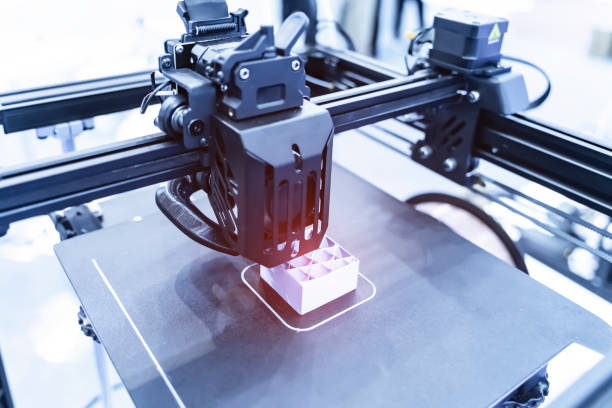
10 Life-Changing Books You Need to Read This Year
June 24, 2024
How Smartphones Have Changed Communication Forever
June 24, 2024How 3D Printing is Disrupting Manufacturing
3D printing, also known as additive manufacturing, is revolutionizing the manufacturing landscape by constructing objects layer by layer from digital models. This innovative technology employs a variety of materials, including plastics, metals, and ceramics, allowing for the creation of complex and customized items that were previously impossible or too costly to produce using traditional methods.

Understanding 3D Printing Technology
3D printing, or additive manufacturing, fabricates objects by depositing materials layer upon layer based on digital designs. It enables intricate geometries and customization, surpassing traditional manufacturing methods.
Applications Across Industries
Healthcare Sector
In healthcare, 3D printing crafts personalized prosthetics, implants, and surgical tools. It also explores bioprinting for tissues and organs, promising breakthroughs in medical treatments.
Aerospace and Automotive Industries
3D printing benefits aerospace and automotive sectors with lighter, more durable parts and rapid prototyping capabilities. It enhances design flexibility and reduces production costs.
Consumer Goods and Fashion
Consumer goods leverage 3D printing for customized products like jewelry and home decor. Fashion integrates it for avant-garde clothing designs, supporting sustainable and local production trends.
Architecture and Construction
Architects adopt 3D printing for complex building components and prototypes. It facilitates efficient construction practices and enables architectural innovation.
Advantages of 3D Printing in Manufacturing
Design Flexibility
3D printing allows intricate designs and complex geometries that traditional methods struggle to achieve. It empowers designers to push creative boundaries.
Rapid Prototyping and Iteration
Prototyping with 3D printing accelerates product development cycles, enabling quick adjustments and enhancements before mass production. This agility reduces time-to-market.
Cost Efficiency
Despite initial setup costs, 3D printing reduces expenses in tooling, inventory, and supply chain logistics. It minimizes material wastage and offers on-demand production capabilities.
Customization and Personalization
Manufacturers cater to individual preferences through mass customization. 3D printing facilitates personalized products without compromising production efficiency.
Challenges and Limitations
Material Constraints
Materials used in 3D printing, while expanding, may not match traditional counterparts in terms of strength and durability for certain applications.
Scalability Issues
Scaling 3D printing for large-scale manufacturing remains challenging due to speed limitations and production volume constraints.
Intellectual Property and Regulation
As accessibility grows, safeguarding intellectual property and complying with regulatory standards become critical concerns in digital manufacturing.
Future Trends and Innovations
Advanced Materials Development
Ongoing research explores new materials for enhanced performance in 3D printing applications, including biocompatible options and sustainable alternatives.
Industry 4.0 Integration
Integration with IoT and AI technologies enhances automation and quality control in 3D printing processes, paving the way for smart manufacturing.
On-Demand Manufacturing
The shift towards localized production and on-demand manufacturing aligns with 3D printing’s capabilities, reducing lead times and inventory costs.
Conclusion
3D printing disrupts manufacturing by offering innovative solutions across diverse industries. Its ability to create intricate designs, streamline production processes, and facilitate customization reshapes traditional manufacturing paradigms. As 3D printing continues to evolve and integrate with emerging technologies, its impact on global manufacturing landscapes will expand, fostering innovation and sustainability.




